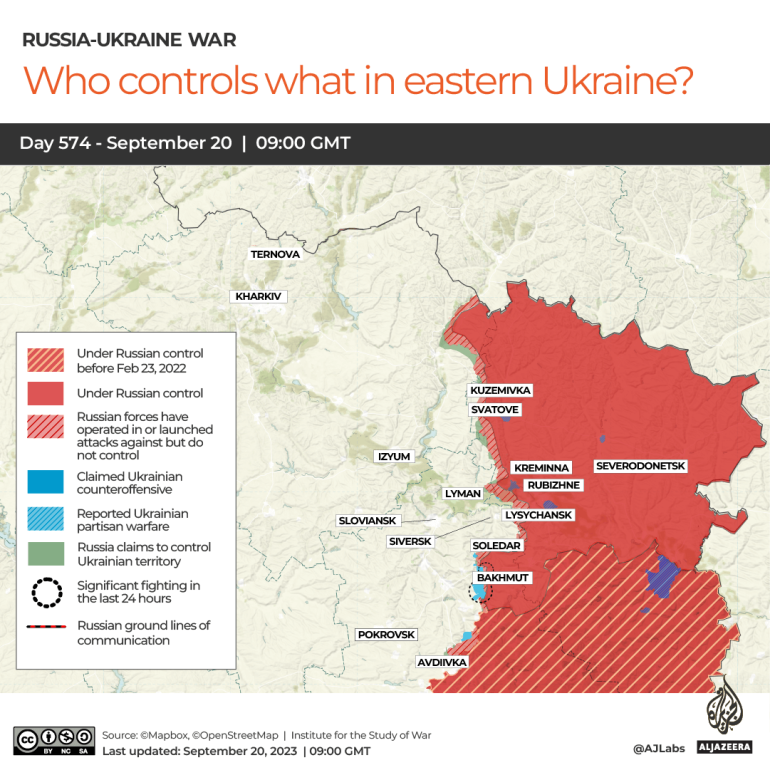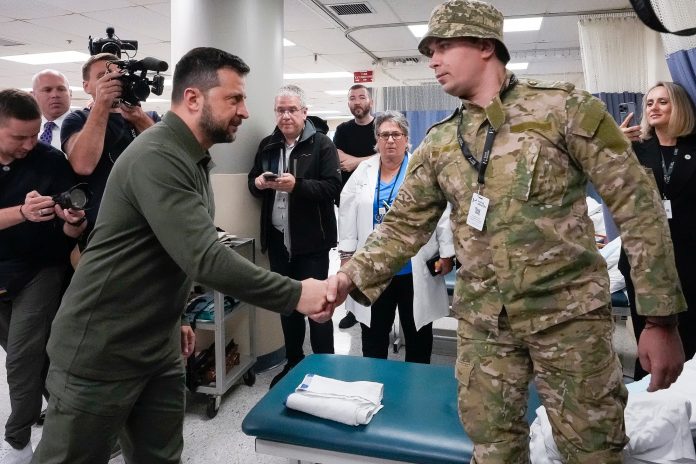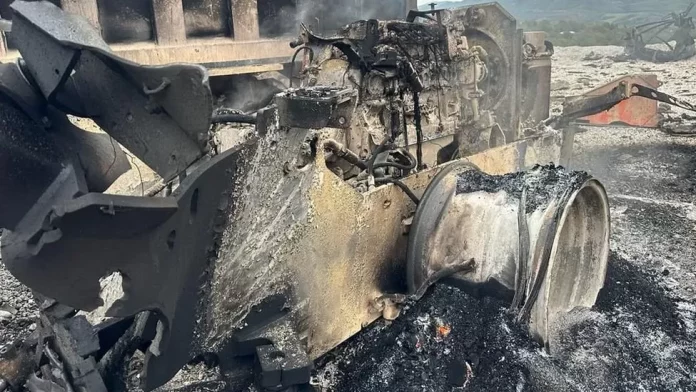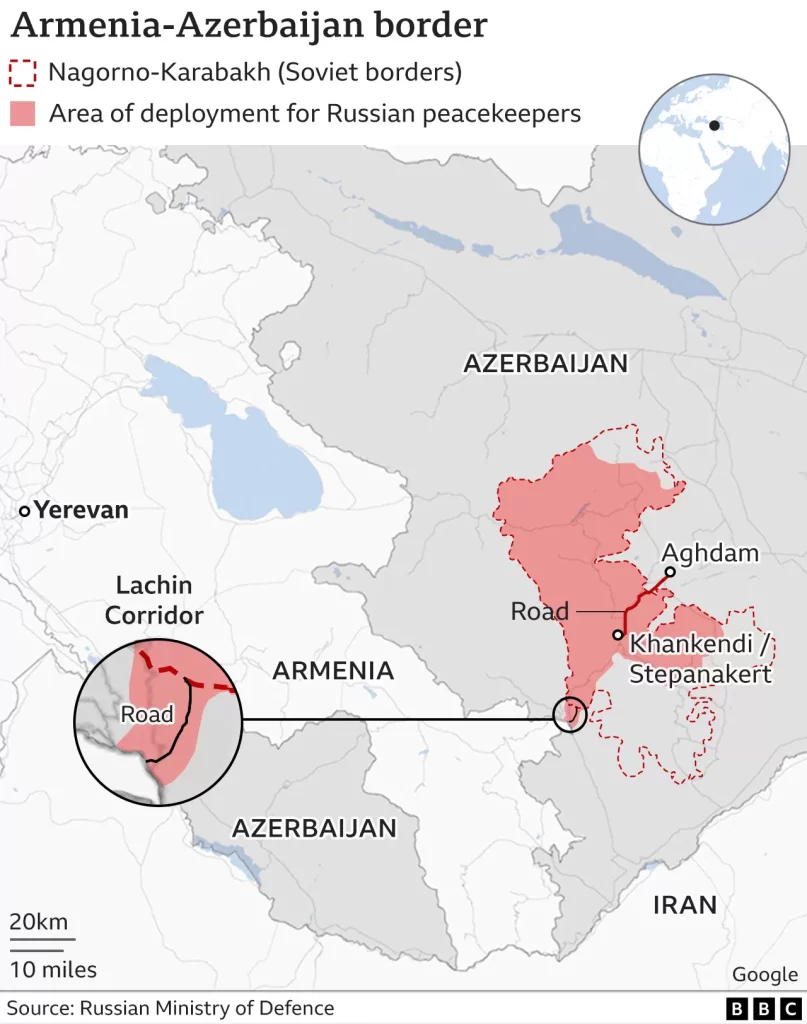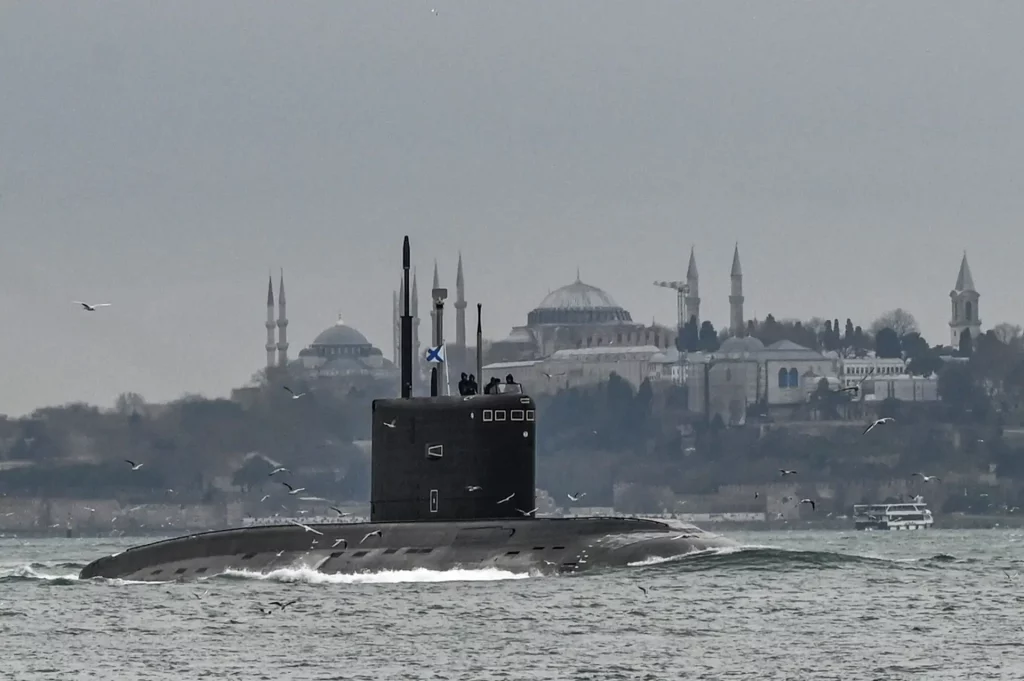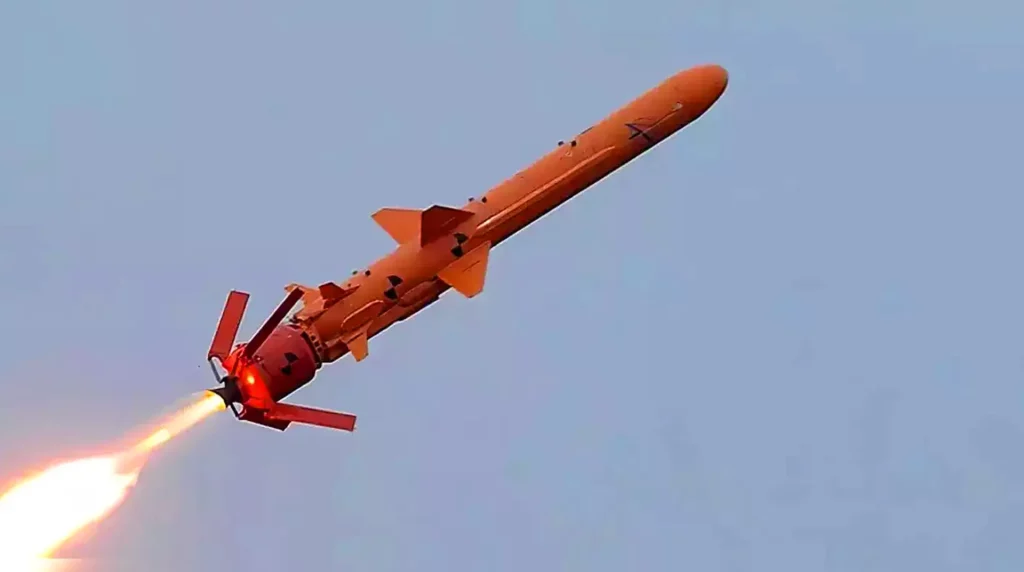In the 82nd week of the ongoing conflict, Ukrainian forces successfully neutralized advanced Russian air defense systems in Crimea and seized control of two strategically vital towns near the eastern city of Bakhmut. Additionally, there are indications that Ukrainian forces might have disabled three contemporary Russian warships, underscoring their growing proficiency in long-range enemy asset engagement while sustaining their territorial advancements.
Sea Drones Attack
On September 14, it appears that Ukraine employed naval drones in two separate incidents targeting Russian warships. Ukraine’s Strategic Command asserted that it struck two of Russia’s Vasily Bykov Project 22160-class patrol ships, resulting in unspecified damage. The Ukrainian government even released video footage showing the Vasily Bykov, commissioned in 2018, firing at a surface drone that appeared to be approaching for an attack.
In response, Russia’s defense ministry stated that its Black Sea Fleet had “destroyed two unmanned semi-submersible boats” in the southwestern part of the Black Sea, attributing them to Ukraine.
Additionally, the Ukrainska Pravda news outlet reported that a naval drone had caused damage to the rear starboard hull of a Bora-class guided missile corvette, the Samum, near the entrance to Sevastopol port. This damage compelled the vessel to be towed for repairs, with a noticeable roll to starboard.
Ukrainska Pravda further noted that the attack utilized an experimental model of a marine drone capable of operating in adverse weather conditions and evading detection behind high waves. During the operation, wave heights reportedly reached 1.5-2 meters, highlighting the effectiveness and adaptability of the drone technology employed by Ukraine.
Also Read: Breaking News: Ukrainian Attack Uncovers Massive Damage on Russian Submarine
Russia’s defense ministry claimed that the Samum had effectively defended itself and eliminated the “unmanned naval boat.” However, photographs circulating online contradicted this assertion, as they depicted the Samum being towed by two tugboats, suggesting that the vessel had indeed suffered some form of damage or malfunction.
A day following this incident, Ukraine reportedly launched another attack, this time targeting the Russian patrol boat Askold, though the outcome of this attack remains undisclosed.
Phillips O’Brien, a professor of strategic studies at the University of St Andrews in Scotland, characterized the assault on the Samum as “one of the most well-executed and planned operations of this war so far.” He went on to state that Ukraine is not only holding its own in the maritime conflict but is, in fact, gaining the upper hand in this arena.
Long-distance attacks: Russia’s Black Sea Fleet, Crimea
Ukraine has significantly escalated its attacks on Russia’s Black Sea Fleet and its base in Crimea, specifically at Sevastopol.
On September 12, Ukraine launched missiles and drones, successfully targeting the Russian landing ship Minsk and a Kilo-class submarine that was docked at Sevastopol for repairs.
The maritime conflict has been intensifying since July 17 when Ukraine used unmanned surface drones to damage the Kerch Bridge, connecting its Crimean peninsula (annexed by Moscow in 2014) to the Russian mainland. Russia responded by withdrawing from a UN-backed agreement that had allowed Ukraine to export large quantities of grain from its Black Sea ports. Russia then warned it would use its naval power to obstruct Ukraine’s Black Sea exports.
In retaliation, Russia struck Ukrainian ports and grain silos along the Danube River, aiming to disrupt exports to Romania and beyond through Europe’s overland routes.
Ukraine countered by increasing long-distance attacks on Russia’s Black Sea Fleet and Crimea:
On August 23, Ukraine destroyed a Russian state-of-the-art S-400 ‘Triumf’ air defense missile system in Crimea.
Two days later, it employed a drone swarm to attack the Russian 126th Guards Coastal Defense Brigade of the Black Sea Fleet near Perevalne in Crimea.
On September 14, Ukraine destroyed another S-400 battery near Yevpatoria, a western Crimean port. Russia acknowledged shooting down 11 drones in Yevpatoria but downplayed the incident. Geolocated footage indicated activity in the area of the reported attack.
According to a source within Kyiv’s secret service, a combination of unmanned aerial drones and Neptune missiles was used in the attack on the S-400 battery in Yevpatoria. The drones targeted the Russian air defense battery’s antennae, while the missiles struck its launchers.
The use of both aerial and surface drones in conjunction with missiles in these attacks demonstrates a growing sophistication in Ukraine’s strategy, as noted by military analysts.
If Ukraine can sustain these attacks and continue to disrupt Russian shipping in Sevastopol, it could compel the Black Sea Fleet to relocate to Russia, a significant step in Ukraine’s plan to regain control of Crimea.
Ukraine’s pushback against the Russian fleet appears to be yielding results, as Ukrainian Infrastructure Minister Oleksandr Kubrakov reported that five merchant vessels had docked in Ukrainian grain ports and departed with cargoes since August 15.
Ukrainian officials have stated their intent to persist with attacks on the Russian navy, and the Black Sea Fleet is reportedly keeping its ships in constant movement between Crimea and Russian naval bases due to the fear of further attacks.
Territorial momentum
On September 14, Ukrainian forces successfully seized control of the town of Andriivka, located five kilometers south of Bakhmut, as confirmed by Ukraine’s general staff.
The 3rd Separate Assault Brigade of Ukraine conducted what they described as a “lightning operation.” This operation effectively encircled the Russian garrison in Andriivka, isolating it from the main force. Over the course of two days, they managed to eliminate “almost all the infantry of the 72nd Separate Motorized Rifle Brigade,” including officers, and a significant amount of equipment.
Since the Russian occupation of Bakhmut in late May, Ukrainian forces have been gradually maneuvering around the city, both to the north and south. Three days following the recapture of Andriivka, Ukrainian troops raised their flag over the neighboring town of Klishchiivka, which is also situated to the south of Bakhmut.
Ukrainian Ground Forces Commander Oleksandr Syrskyi noted that the liberation of Andriivka and Klishchiivka has severely undermined the combat capabilities of two elite Russian airborne formations, namely the 31st Guards VDV Brigade and the 83rd Guards VDV Brigade.
Geolocated footage revealed Ukrainian troop advancements near Rozdolivka, northwest of Bakhmut.
The Institute for the Study of War (ISW), a Washington, DC-based think tank, emphasized the strategic significance of these gains. They believe that Russia’s allocation of military resources to hold Bakhmut for political reasons has allowed Ukraine to exploit weaknesses in well-prepared Russian defenses along the southern front lines, especially in western Zaporizhia.
In this region, Ukrainian forces were making progress west of Robotyne on September 16, a town they had captured in late August. They were also advancing west of Verbove, a town currently under their focus. Both Ukrainian and Western officials concur that Ukrainian troops have breached the first layer of Russia’s defensive positions and are now targeting the second layer of Russia’s front line. If they succeed in breaking through this second line, Ukrainian forces could potentially infiltrate behind Russian positions.
